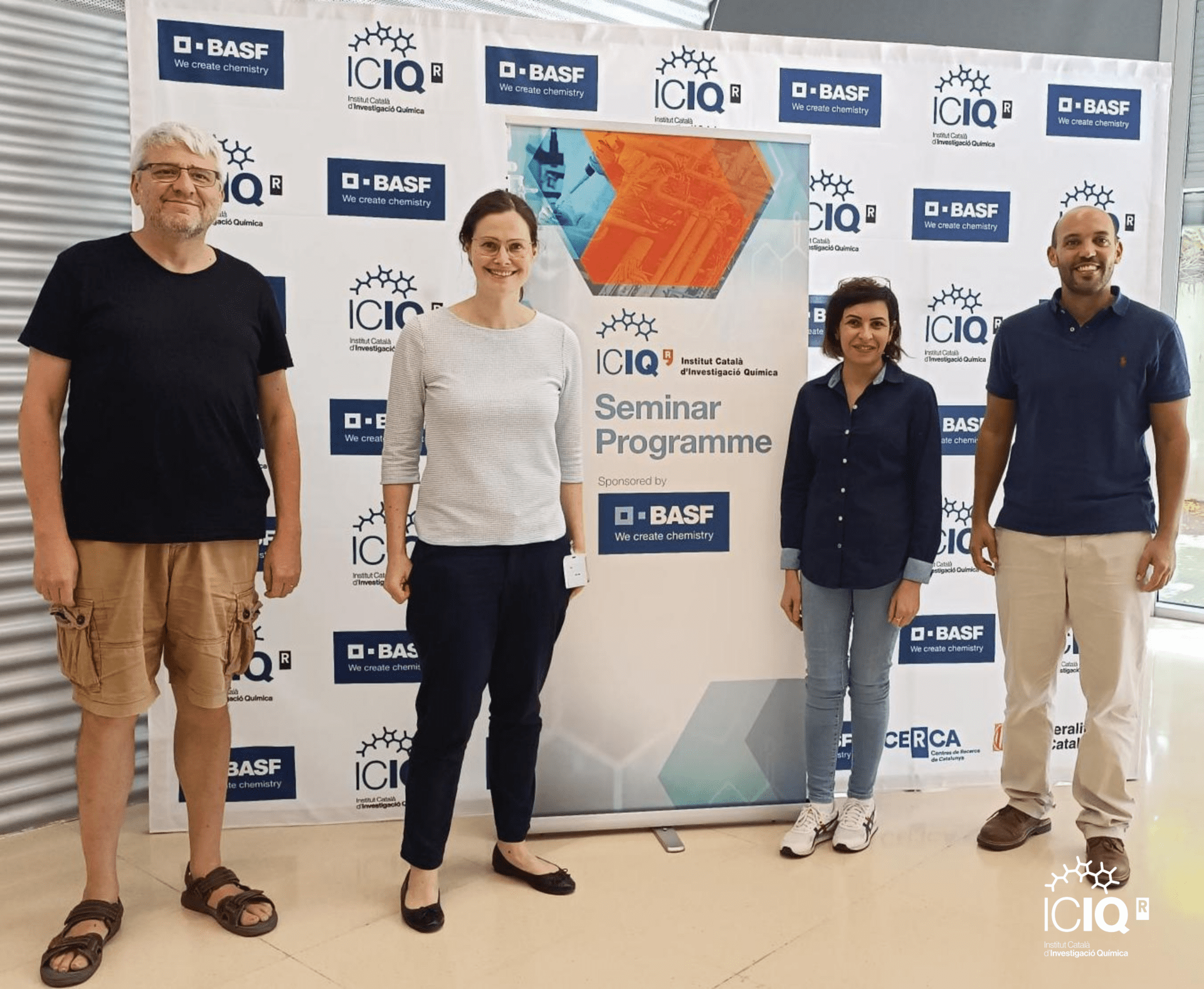
 16/10/2024
16/10/2024
 12:00 h
12:00 h
 ICIQ Auditorium Prof. Dr. Kilian Muñiz
ICIQ Auditorium Prof. Dr. Kilian Muñiz
- Lecturer: Prof. Dr. Ulrike Kramm
- University: Technische Universität Darmstadt, Germany
- Sponsored by:

From Porphyrins Towards Metal-N4 Centers Embedded in Carbon – How this Impact their Structure and Reactivity
In view of the energy transition the electrochemical activation of small molecules becomes important. Metal N4 macrocycles enable a broad playground for tuning the chemical properties and thus the applicability in electrocatalysis, e.g. by variation of substituents, axial ligands or selection of the metal center. Already 50 years ago it was discovered that a pyrolysis of such macrocycles improves the electrocatalytic activity and the stability.[1] By now, it is clear that the heat-treated analogues metal-nitrogen-carbon (MNC) catalysts still contain MN4 moieties that are of relevance for the electrochemical activation of small molecules, at least under distinct conditions.[2] The share in MN4 sites, however, significantly depends on the preparation and the precursor system of choice. During pyrolysis, typically also side phases such as metallic iron, iron carbide, iron nitride or iron oxide are formed.[3,4] Part of them also contribute in electrocatalysis. Such side phases and functional group that are present in the carbon framework might affect the electronic and catalytic properties after pyrolysis.
A central question is to what extent the fundamentals obtained for the macrocyclic systems can also be transferred to the pyrolyzed system or if other principles need to be applied? Based on this, from scientific perspective the ultimate goal would be obtaining a pure FeNC catalyst without any side phases. This would enable to systematically explore the role of functional groups or side phases on the electronic state and electrocatalysis of the FeNC.
Motivated by this goal, I will present our insights ranging from substituent effects associated with the molecular system to the effect of nanoparticles on MNC catalysts followed by Mössbauer spectroscopy and other nuclear resonance techniques, e.g. [5-8].
References
[1] H. Jahnke, M. Schönborn, G. Zimmermann, Organic Dyestuffs as Catalysts for Fuel Cells, Topics Curr. Chem., 61 (1976) 133–182.
[2] S. Paul, …, U.I. Kramm, P. Bogdanoff, Influence of the Metal Center in M-N-C Catalysts on the CO2 Reduction Reaction on Gas Diffusion Electrodes, Acs Catalysis, 11 (2021) 5850-5864.
[3] V.A. Saveleva, …, P. Glatzel, Fe–N–C Electrocatalyst and Its Electrode: Are We Talking about the Same Material?, ACS Applied Energy Materials, 6 (2023) 611-616.
[4] L. Ni, C. Gallenkamp, …, V. Krewald, U.I. Kramm, Active Site Identification in FeNC Catalysts and Their Assignment to the Oxygen Reduction Reaction Pathway by In Situ 57Fe Mössbauer Spectroscopy, Advanced Energy and Sustainability Research, 2 (2021) 2000064.
[5] N. Heppe, C. Gallenkamp, …, V. Krewald, U.I. Kramm, Substituent Effects in Iron Porphyrin Catalysts for the Hydrogen Evolution Reaction, Chem. Europ J 29 (2022), e202202465.
[6] N. Heppe, …, U.I. Kramm, Applying Nuclear Forward Scattering as in situ and operando tool for the characterization of FeN4 moieties in the hydrogen evolution reaction, ChemRxiv 2023, doi: 10.26434/chemrxiv-2023-sk5sr.
[7] C. Prössl, …, U.I. Kramm, Impact of Ir modification on the durability of FeNC catalysts under start-up and shutdown cycle conditions, J. Mater. Chem. A 10 (2022), 6038-6053.
[8] V. Gridin, …, U.I. Kramm, Influence of the addition of nanoparticles on the oxygen reduction reaction characteristics of FeNC catalysts and the impact on the stability, J. Pow. Sources 561 (2023), 232713.
Other events

Let's create a brighter future
Join our team to work with renowned researchers, tackle groundbreaking
projects and contribute to meaningful scientific advancements




















